Bolzano travel guide: What to do in Bolzano
Nestled in the snowy peaks of South Tyrol, Bolzano is widely considered to be the gateway to the Dolomites. With its cold winters and warm summers, Bolzano is a year-round destination that has something to appeal to every type of traveller.
Bolzano is arguably one of the most culturally diverse cities in the region, if not the whole of Italy. It has a rich history stretching as far back as the Roman period. In fact, there is evidence of the surrounding area being inhabited as far back as 5300 BCE. The city truly is an amalgamation of countless different European cultures. To this day, it still retains a certain level of autonomy and self-governance. Its cultural heritage truly cannot be explained on paper. Instead, it must be fully experienced in person whilst walking the historic streets and tasting some of the rich food and drink on offer.
Bolzano is also a city of two sides. It offers beautiful scenery and hundreds of miles of hiking trails in the summer months. It then becomes the perfect hub for skiers, and winter sports enthusiasts in the winter. Even if extreme sports aren’t your thing, the Christmas markets and cosy cafés are enough to keep any traveller entertained.
The history of Bolzano
Whilst the city itself was originally conceptualised in 1170, the area in which modern day Bolzano lies was of great importance as far back as the Roman times. This is when the Via Claudia Augusta road passed through the area, creating a vital link between Southern Germany and Northern Italy. The Romans once created a small military outpost in the area in an aim to control movement through the alps. But the Bolzano basin was seen as too marshy to create a significant trading outpost. The outpost grew steadily from the 8th century onwards. In the 12th century, the changing terrain made it suitable for a significant settlement.
Bolzano was often troubled by the Counts of Tyrol in the years that followed. They disputed the area’s ownership, often opting to demolish parts of the growing city. Nonetheless, Bolzano grew rapidly throughout the middle ages, offering safe passage for the travellers and merchants that frequented the city, and profiting from its geographical location. Much of the city’s architecture dates back to this era of significant growth, and to this day Bolzano remains an amalgamation of Germanic-Italian cultures.
It was only in the late 18th century that Bolzano’s importance began to wane. Trade slowed as the city became caught between various European conflicts,. For a short period during the Napoleonic wars, it was controlled by the French. Austrian control was eventually restored in 1814, when the city received significant modernisation. Schools and hospitals were built, along with the Brenner railway that connected the city with other hubs such as Innsbruck and Verona. This period of growth was short-lived, as both World Wars once again placed Bolzano, and the surrounding region into turmoil. The city went from Austrian control, to Italian, to German, and finally back to Italian after World War II. The region of South Tyrol, of which Bolzano is its capital, was granted degrees of self-governance in both 1948 and 1972. It remains an autonomous entity within Italy to this day.
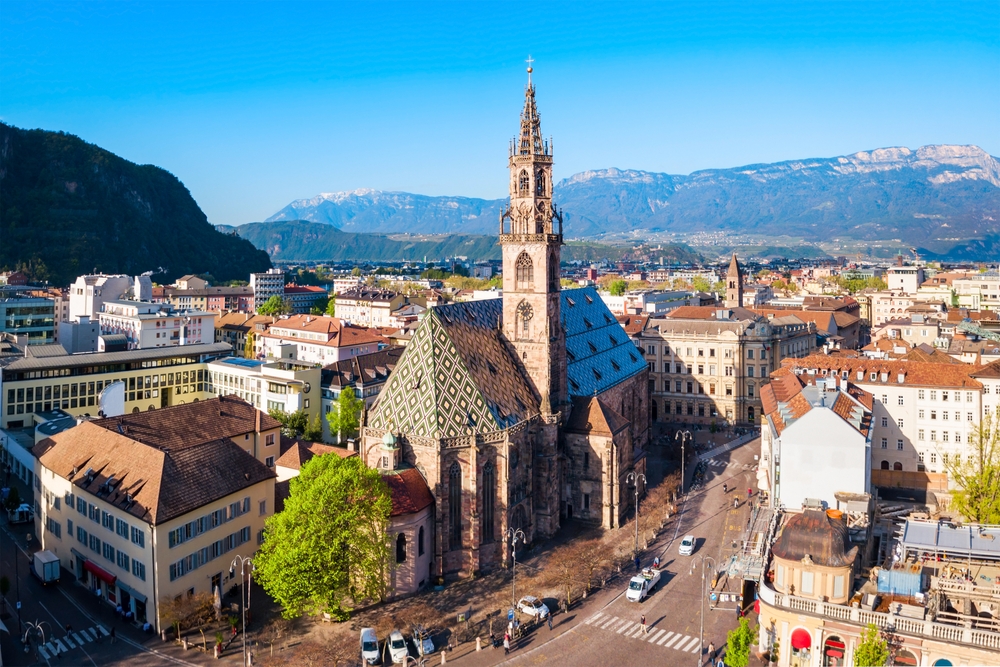
The rich, tumultuous history of Bolzano has created a diverse culture that truly cannot be found anywhere else on the planet. The mix of Austrian, German and Italian cultures all combine in Bolzano. These give the city a truly unique feel. Its past military and commercial significance also make the city a must-visit for anyone visiting the region. In this Bolzano travel guide, we’ll share everything you need to know about visiting this amazing city.
Top things to do in Bolzano
There are a host of things to do in Bolzano that we’re excited to share with you in this Bolzano travel guide.
Explore the Piazza Walther
The Piazza Walther is the beating heart of Bolzano. Colourful historic buildings surround the square, and it is a hub for both tourists and locals alike. Cafes, shops and restaurants line the square and surrounding streets. It is a must-visit for anyone exploring Bolzano and is the perfect way to immerse yourself in the unique vibe of the city.
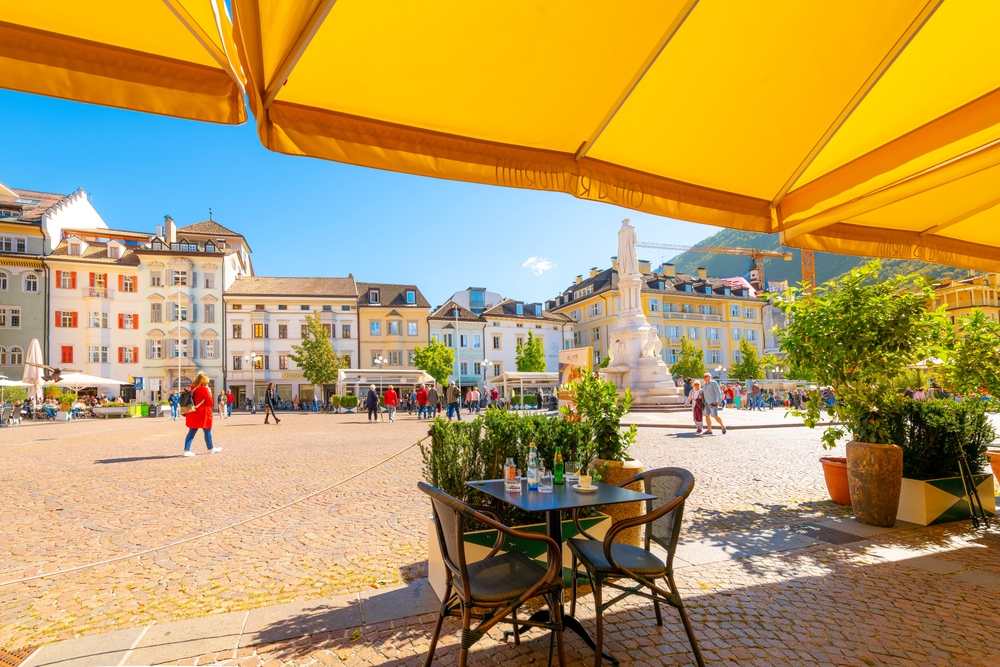
The square’s central feature is a statue of the 12th century German poet Walther von der Vogelweide. This was erected in 1889 to celebrate his life and works. The largest event held in the square is the annual Christmas market. Despite Bolzano being a relatively small city, its Christmas market is among the largest in Italy. It even rivalls those found in larger cities such as Milan.
Stroll through Bolzano’s historic centre
Sadly Bolzano was once heavily bombed by the Germans during the second World War. That said, much of the city’s historic town centre remains intact. Many of its buildings date back almost a thousand years, with some hiding the remains of buildings built when the town was a mere trading post. In fact, whilst the city’s Gothic central cathedral was built between the 14th and 16th centuries, excavation work in 1948 revealed that it was built upon the remains of an ancient Christian church dating back as far as the 4th century. Bolzano’s architecture remains incredibly unique to this day. Its occupation by multiple different countries over the city’s long and tumultuous history has created such a unique city centre that you truly just have to see for yourself to fully understand.
Visit Ötzi the Iceman
In 1991, a German couple exploring a section of the Italian Alps close to the Austrian border made a remarkable discovery. Partially exposed in the ice lay the mummified body of a man. As the body was so well preserved, the hikers originally believed that the body was that of a climber, who had recently died after an accident. In reality, however, this couldn’t be further from the truth. Analysis showed that Ötzi (named after the Ötzal Alps he was discovered in), had died over 5000 years ago, and had been preserved in the ice ever since. The story of ‘the Iceman’ received global attention, and many theories began to emerge about Ötzi’s untimely demise. The prevailing theory, however, placed Ötzi at roughly 48 years old. This was rather old for the period in which he lived, but he was only 160cm tall, and weighed just 50kg. Closer examination discovered he was plagued by disease. He had three gallstones, suffered from degenerative joint disease, intestinal infections, and tooth decay to name just a few. In other words, Ötzi was not a well man at the time of his death. His final days could be reconstructed with remarkable accuracy; Ötzi was running from something. In his last days, Ötzi moved from Alpine heights to a lower altitude, before making his way back up into the glacier region where he would eventually die. During this journey, the Iceman encountered two violent attacks. Whilst he survived the first attack, which occurred roughly a week before his death, he was left with a painful stab wound on his right hand. Ötzi was unfortunately not as lucky with the second attack, however. He was shot from behind with an arrow that pierced a main artery. It is estimated that the Iceman succumbed to his injuries in just a matter of minutes. Since 1998, Ötzi has been on display at the South Tyrol Museum of Archaeology in Bolzano, along with tools and artefacts discovered near the body.
Go Skiing
Bolzano’s scenic backdrop, expansive hiking trails, and reputation as the ‘gateway to the dolomites’ make the city an attractive destination in the summer months. However the city truly only comes alive in the winter months. As the temperatures drop, the surrounding Dolomite mountains are blanketed with a layer of snow. Bolzano then becomes a popular destination for those looking to avoid the crowds of large ski resorts, but still wants to be within a stone’s throw of pristine alpine ski slopes.
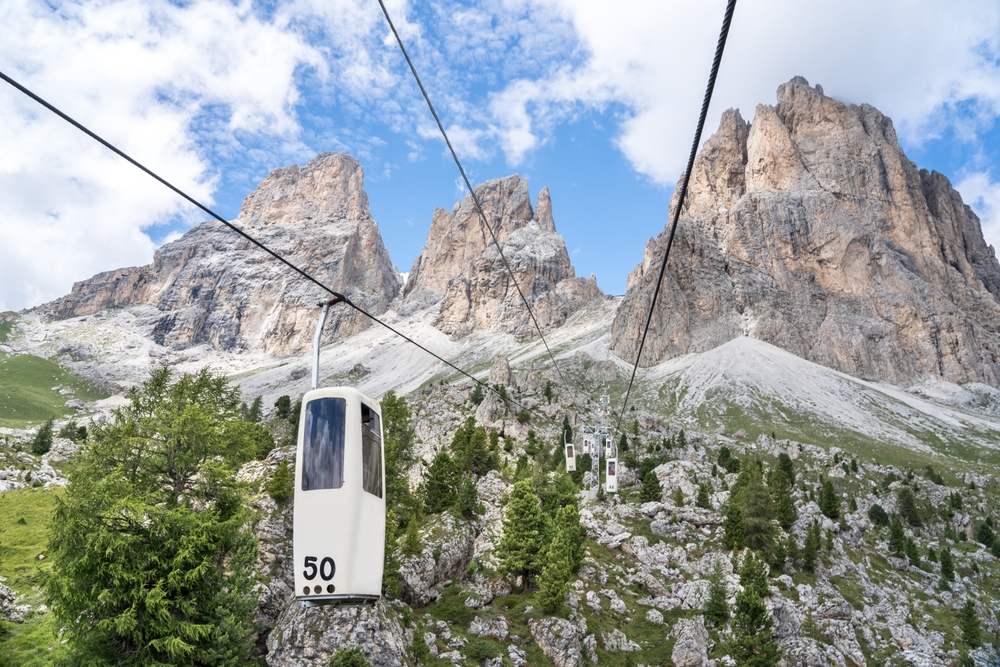
Bolzano itself is not a ski resort. However, a short drive, or cable car ride allows visitors to reach popular ski destinations such as the world-renowned Val Gardena region. This resort is known for its vast array of runs that appeal to any skill level. After a long day on the slopes, Bolzano has a great après-ski scene. Its cosy bars and restaurants are the perfect way to relax and unwind.
Visit Roncolo Castle
Just a ten-minute drive from Bolzano’s city centre, Roncolo Castle is a dramatic 13th century fortress. It overlooks the city and offers breath-taking views of the surrounding region. The castle originally served as a noble residence, protecting its residents from the turmoil that often occurred in the valley below. Nonetheless, throughout the castle’s long history, there have been various changes in ownership. The most notable was when it fell into the hands of the Count of Tyrol in the 14th century, when its geographical location and architectural design made it very difficult to attack. The vibrant frescoes that were added during this period are one of the main attractions of the castle today and offer a fascinating glimpse into medieval life. Scenes of chivalry, love, and war can all be seen on these vibrant artworks, cementing the castle as a cultural landmark in the region.
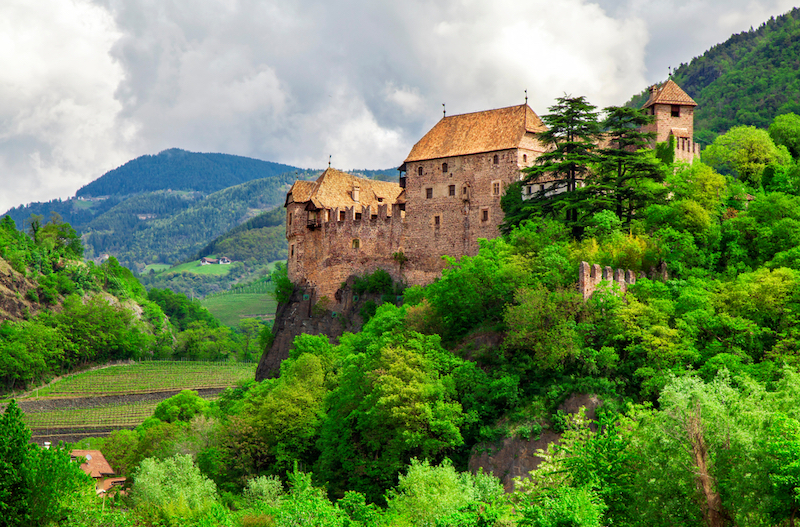
In the 16th century, as the surrounding region began to stabilise in ownership, and new forms of warfare replaced traditional ones, Roncolo Castle’s importance began to wane. By the 19th century, it was largely abandoned, and had fallen into disrepair. Thankfully, in the late 20th century, efforts were made to restore the castle, and its cultural significance was fully recognised. Today, it is a protected site, and a popular destination for tourists visiting the Bolzano region. Events and exhibitions are hosted at the site, and have allowed the castle to thrive for decades, if not centuries to come.
What to Eat and Drink in Bolzano
As you may have guessed, Bolzano’s geographical location and tumultuous past has given the city a unique cuisine that takes inspiration from well-known Italian, German, and Austrian dishes. Many of its signature plates offer the best of both Alpine and Mediterranean cuisines. These are then elevated with the use of locally-sourced ingredients.
Arguably one of South Tyrol’s best-known dishes, Canederli, is a firm favourite of ours. It consists primarily of bread dumplings. The basic recipe involves mixing bread, milk, and eggs, but they are almost always combined with other ingredients such as speck, cheese, or spinach. They can be served dry. However, we recommend taking the dish with its signature clear broth, especially in the colder winter months. This carb-dense meal is the perfect way to recuperate some energy after a long day hiking, or skiing on the surrounding slopes.
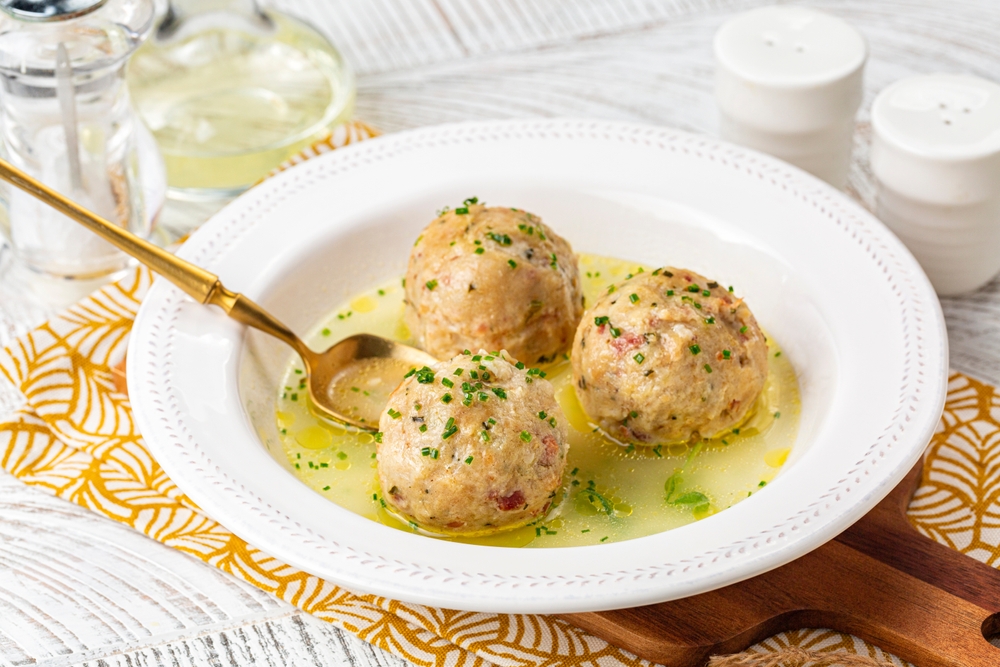
In the warmer summer months, when you might not be looking for a plate of rich comfort food, South Tyrol still has plenty of light dishes on offer. For example, as we briefly mentioned, Speck is often used in Canederli, but is also commonly added to antipasto boards, or even enjoyed on its own. Both Speck and its more famous counterpart, Prosciutto, come from a pig’s hindquarters and are a form of ham, but Speck is remarkably darker in colour, and noticeably firmer in texture. This is a result of the long aging and smoking process, that gives Speck a much deeper, richer flavour than Prosciutto. It is also often laced with spices such as juniper berries and bay leaf, which further intensify the flavours. It is a must-try when visiting the region and can be the perfect appetiser or light lunch when mixed with some local cheeses and other cured meats.
Whilst its name might clearly originate from Bolzano’s more Germanic influences, the popular dish of Schlutzkrapfen (we’re still figuring out the pronunciation), shares its roots with ravioli. As is the case with much of South Tyrol’s cuisine, Schutzkrapfen relies on rich, carb-heavy flavours, and the ravioli are typically filled with potatoes, spinach, or cheese. They are then served with a drizzle of melted butter. We think this could be the ultimate winter comfort food dish.
Thankfully, South Tyrolian wine isn’t quite as rich and heavy as its food. The cooler climate in the region does make winemaking somewhat challenging for most grape varieties.
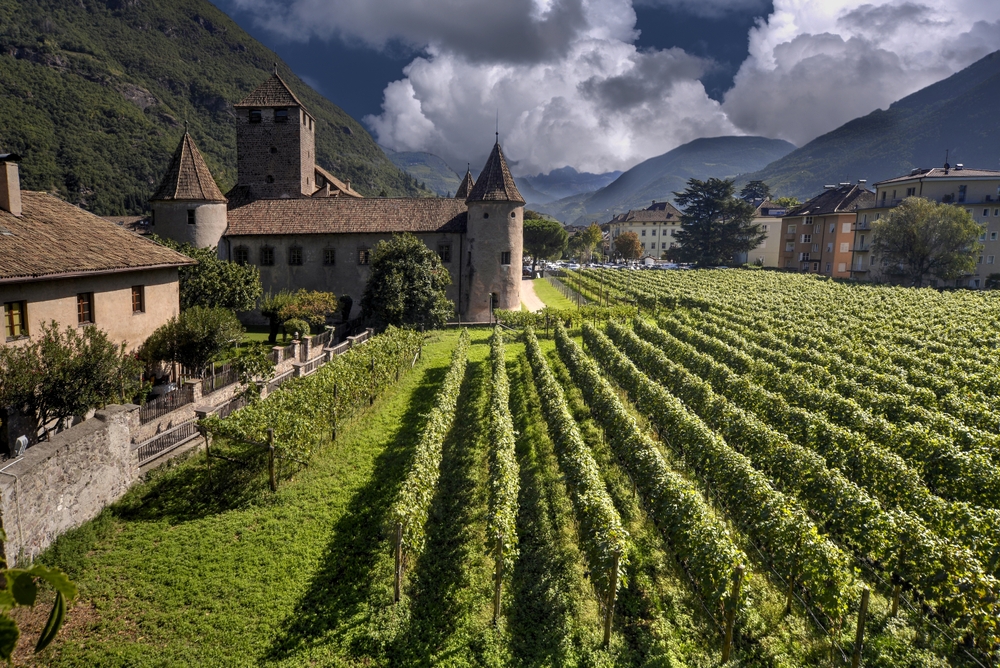
However, it lends itself perfectly to the Gewürztraminer grape, which thrives in cooler conditions. The wine itself is refreshingly crisp, with hints of stone fruit and some floral notes. It can be made either dry or sweet, however, most lends itself to the former category. It is often served rather cold, at just a few degrees above freezing, giving it a refreshing quality.
How to get to Bolzano
Bolzano’s geographical location in the Alps makes it a bit more challenging to reach compared to some of Italy’s bigger cities. That said, it is still remarkably well connected. Bolzano’s train station operates frequent services to major European cities. Rome takes roughly four and a half hours to reach, and both Munich and Milan are around three and a half hours away. Verona, on the other hand, is just under two hours away by train, making it one of Bolzano’s closest major cities. Bolzano itself does not have an international airport. However, Verona Villafranca Airport is around 150 km away, and Innsbruck Airport is a little closer at 120 km. Flying into Munich may also be an option. Even though it is over 300 km away, there are direct trains to Bolzano from Munich central station. We recommend flying into one of the aforementioned cities, and then renting a car to drive to Bolzano, as this allows you to fully explore the surrounding area. If you’re travelling on a budget, bus companies such as FlixBus offer cheap tickets to Bolzano from major hubs if you’re not too worried about journey times.


